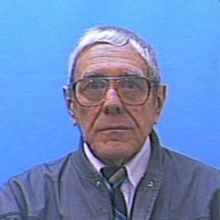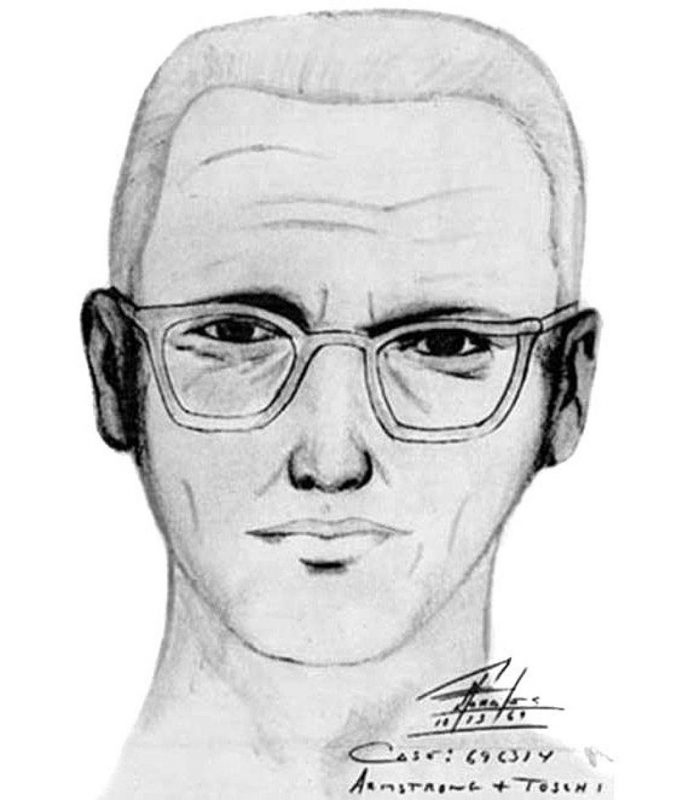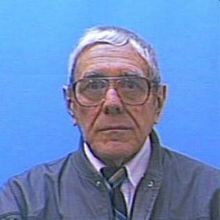The Chandler family’s car was full of presents that night, and they were driving through Texas to spend Christmas with the senior Chandler’s mother. Truck driver L.C. Black was heading in the opposite direction, and two miles west of Sherman, Black veered into the oncoming lane to avoid a truck parked in the road. He plowed head-on into the Chandlers. Joseph Newton Chandler II, Elena “Billie” Chandler, and their son Joseph Newton Chandler III died instantly.
It was December 21, 1945.
Fifty-six years later, Joseph Newton Chandler III died again.
Joe Chandler seemed like another lonely suicide. The retiree whom co-workers had known as a compulsively neat man who kept to himself sat down on or about July 23, 2002, pointed the barrel of his gun at the roof of his mouth and pulled the trigger. Police found him a week later after he’d begun to smell.
At Lubrizol, a chemical company where he’d been employed as an electrical designer and draftsman, fellow employees noted that in addition to being remote, Chandler had some strange habits. He watched white noise—a TV tuned to an unused channel—for hours. He once drove to Maine to visit L.L. Bean only to turn around and make the 700-mile trip back to Eastlake—because the store parking lot was full. He attended a costume party dressed as a gangster and was completely silent the whole night. He had bouts of paranoia, sometimes disappearing for a time, hinting that it felt like someone was closing in on him.
But there wasn’t anything that strange about the lonely eccentric’s death. He’d been diagnosed with colon cancer; perhaps he’d taken what he felt was the rational option—some people do.
The strangeness came later when investigators began searching for possible heirs to the $82,000 he’d left behind in his bank account. Heirs they wouldn’t find for another 16 years after DNA combined with genealogical research (the same method that caught the Golden State Killer) revealed who he really was.

Robert Ivan Nichols was 19 when the first Joseph Chandler died. Nichols, born in 1926 in New Albany, Indiana, was in the Navy at the time as a fireman, 2nd class. He was likely recuperating from injuries in 1945—wounds that occurred when the Japanese attacked his ship at Okinawa. He received a purple heart, but when he came home from the war, Nichols burned his uniforms.
In January 1947, Nichols married LaVerne Kort in the Rectory of St. Michael’s Church in Charlestown, Indiana.
They would stay married until 1964. That was when Nichols left his family and moved to Michigan. Then he moved to California. He said was in Redmond but sent his son a letter from Napa.
After 1965 he had no further contact with loved ones and was reported missing. He continued using his real name with employers for 13 more years.
In 1978, something must have changed.
That was when Nichols became the long-dead Joseph Newton Chandler III. He managed to secure a Social Security card with that name and for the next 24 years, everyone knew him as quiet, strange Joe Chandler.
Nichols proved a brilliant impostor by simply doing nothing at all. The bare minimum. He kept to himself, lived modestly, never stuck out, save inadvertently—by being strange enough to notice, but not worry about.
Only one truly odd event in his life indicated that Nichols/Chandler may have had some weird secrets stowed away: When—as journalist James Renner discovered—he went to a hospital with a lacerated penis. He claimed he was masturbating with a vacuum cleaner, but like his life in general, this was likely a lie.
After it was clear that no one knew who the suicide with Joe Chandler’s name really was that the mystery behind the man became intensely compelling. Investigators were stumped yet determined to find something—the fact he’d been living under a false identity for so long fired the imagination of everyone who learned about him.
Was he a fugitive? D.B. Cooper, maybe? Was it possible that he was simply paranoid, so obsessed with some imagined crime or nemesis that he maintained the disguise?
I came up with a theory in 2005 as to who the man was. I would love to say I was the first person to think of this, but I’m not certain I was. I do know I ran with it.

I may have been the first to write about it at length. Basically, I wondered if he was the Zodiac Killer.
Some points where Nichols and what is known (or surmised) about the Zodiac seem to line up:
* Nichols was a draftsman and had engineering experience. Profilers and investigators have said through the years that it’s possible Zodiac did as well.
* Nichols was a veteran. A great deal of evidence points to Zodiac having been a military man. A knowledge of codes, his Wing Walker shoes and even his gift for evading capture.
* Nichols went dark to family and friends in 1965. The first homicide many attribute to Zodiac was the murder of Cheri Jo Bates in 1966. This is so thin as to not even qualify as a coincidence, but what the hell.
* It’s long been thought that Zodiac sent his final letter in 1978. This is still debatable; some experts believe the letter was forged. Nichols assumed Chandler’s identity in 1978.
* Nichols fit many descriptions of the Zodiac. Average height, perhaps a little paunchy, dark hair, glasses. He was perhaps a little older and a little shorter than some estimation
* This is a recent revelation but worth noting: Nichols’s final letter to his son Phil was sent from Napa. The Zodiac’s next-to-last known murder occurred at Lake Berryessa in Napa Valley in 1969.
* An odd tale circulated about Nichols/Chandler’s last internet search brought Zodiac to mind as well—he’d allegedly been researching plastic explosives. The Zodiac had enough bomb-making knowledge to draw a practical bomb design in one of his taunting letters.
I knew when I began thinking about it 13 years ago that I was reaching—the tenuous nature of some things in the list above proves that—and when questioned about it on forums or even in comments I often shot my own arguments in the foot.
Yet the idea hung on, and revelations about Nichols’s life haven’t destroyed it.
But I admit that 13 years ago I was thinking more like a novelist, not an amateur detective, actual detective, or even a clear-headed researcher. One of the downfalls of immersing yourself in true crime, in general, is perceiving the differences between known facts and the story your brain begins to assemble from them.
The known facts about Nichols are that he abandoned his family in 1965. He kept a low profile for 13 years, but he did use his own name. Then in ’78, he stole a dead boy’s identity. This was, by the way, alarmingly easy to do before the age of infinitely networked databases—just apply for a copy of the birth certificate of someone around your age who died young, then get a social security card.
Nichols lived a mostly unremarkable life from there on out. No prints popped up at murder scenes that might match the ghostly California serial killer. There were a handful of couple murders in the region where he lived that resembled Zodiac’s mo., but at least one was ultimately claimed by Edward Edwards—who was himself a perfectly plausible Zodiac suspect.
Nichols’s life was apparently boring and cloistered and exactly the sort of life you should lead if you want to hide who you are from the world.
I admit it: If Nichols was the Zodiac, it would in a way be entirely too neat and tidy a resolution. The kind of twist an editor might tell a novelist was too obvious. Yes, Nichols probably shared some traits, some geography, and a cleverness you could easily ascribe to the Zodiac, but so did a lot of men. That’s why there’s been a profusion of people claiming their fathers were Z throughout the years—some more plausible than others, but none of them proven.
But what does seem certain is that Robert Ivan Nichols was desperate to hide from something. It might have been demons seen only in his bad dreams. It might have been legal trouble he thought was far more serious than it was. It might simply have been his life. Every now and then, some people just opt out. They don’t change their names and live out their lives as virtual hermits, but they leave it all behind. Someone with Nichols’s exacting personality might have simply thought he was being thorough in taking the extra step of assuming a new identity.
There’s a loneliness in Nichols’s story, though, that points to some truly compelling reason to keep his head down. Zodiac or not, it wouldn’t be surprising if whatever he was running from was big. And in the end, he beat it. For good or bad, he won.
This article was featured in the InsideHook newsletter. Sign up now.
























